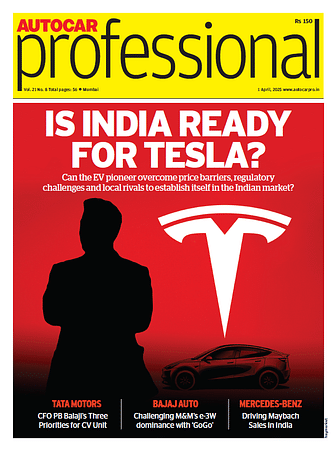Pioneer India aims to redefine aftermarket infotainment with AI and ML
In-car entertainment major explores new technology solutions incorporating artificial intelligence and machine learning even as it grapples with the chip shortage.
A touchscreen infotainment system with Apple CarPlay and Android Auto connectivity features has become the new norm when it comes to in-car entertainment in modern-day vehicles. And, if the connectivity is wireless, it gets even better. However, with customers increasingly preferring factory-equipped infotainment and audio solutions, the aftermarket is really struggling to attract new buyers.
“The audio fitment on the line level has definitely increased and that’s one of the key challenges or an area for us to work upon,” admitted Gaurav Kulshreshtha, product manager and marketing head, Pioneer India, in an interview with Autocar Professional.
“Having said that, there is a considerate proportion of existing car parc on the road, which is significantly very high compared to new cars, and there still lies a big market for us,” he added.
But the Japanese in-car entertainment giant has gauged the severity of the disruption happening in the automotive world and has set a new goal for 2025, which repositions it to transform itself and create experiences for the future of mobility.
“We are working to transform into a solutions company that will aim to solve challenges in the mobility space. While a lot of things are under process, they are at the formulation level. Our recent introduction of Amazon Alexa and Pioneer’s recent tie-up with voice engine company Cerence to develop conversational AI infotainment solutions, are steps in this direction,” Kulshreshtha said.
He further mentioned that AI (artificial intelligence) and ML (machine learning) are changing the infotainment sector. “AI and ML will transform the automotive cockpit as automakers are prioritising these technologies at this point in time.” Pioneer is also looking at ADAS technology as a key area of growth going forward.
Grappling with chip shortage
But where automakers and even infotainment companies are gravely struggling in the present hour is in meeting the demand owing to a stark supply shortage of semiconductors, especially hampering production of infotainment systems.
“We are sustaining an unprecedented shortage of high-end component speakers and touchscreen head units. Our factories are based out of Thailand and Vietnam and it’s definitely a shortage at this point,” Kulshreshtha said.
“Middle of CY2022 or end-2022 is the kind of timeline when we see the situation improving on the semiconductor front,” he added.
Aftermarket key focus
In India, Pioneer is still keeping its focus set on the aftermarket, but aims to offer dynamically new products that would redefine the space in the time to come. Voice assistance, making payments, real-time information, location-triggered marketing alerts, smartphone integration, streaming and gaming services, detection systems like DVRs, TPMS, camera, are being cited as the advancements in the space that have been made over the last few years.
The company recently introduced its flagship Z series touchscreen head units as well as TS series range of high-end component speakers in India and retails its products through 2,000 outlets / accessory stores across the country through a network of 25 distributors.
But despite the ensuing boom in digital retail after the pandemic, in-store sales continue to dominate revenues for Pioneer India, as people are not only looking at the physical product, but also demand installation services as infotainment / electronics is very much a non-DIY-friendly domain.
RELATED ARTICLES
Rajiv Bajaj reappointed MD and CEO of Bajaj Auto for five-year term
Bajaj Auto’s Board of Directors has approved the re-appointment of Rajiv Bajaj as the company’s MD and CEO for another f...
JSW MG Motor launches Comet EV Blackstorm edition
The key highlights of the Comet EV Blackstorm, which is now the top-end variant, are its ‘Starry Black’ exterior along w...
Maruti Suzuki begins production at new Kharkhoda plant
Phase 1 of the Kharkhoda plant will have an annual production capacity of 250,000 units and produce the Brezza compact S...






 03 Dec 2021
03 Dec 2021
 5672 Views
5672 Views








 Autocar India
Autocar India



 Ajit Dalvi
Ajit Dalvi

